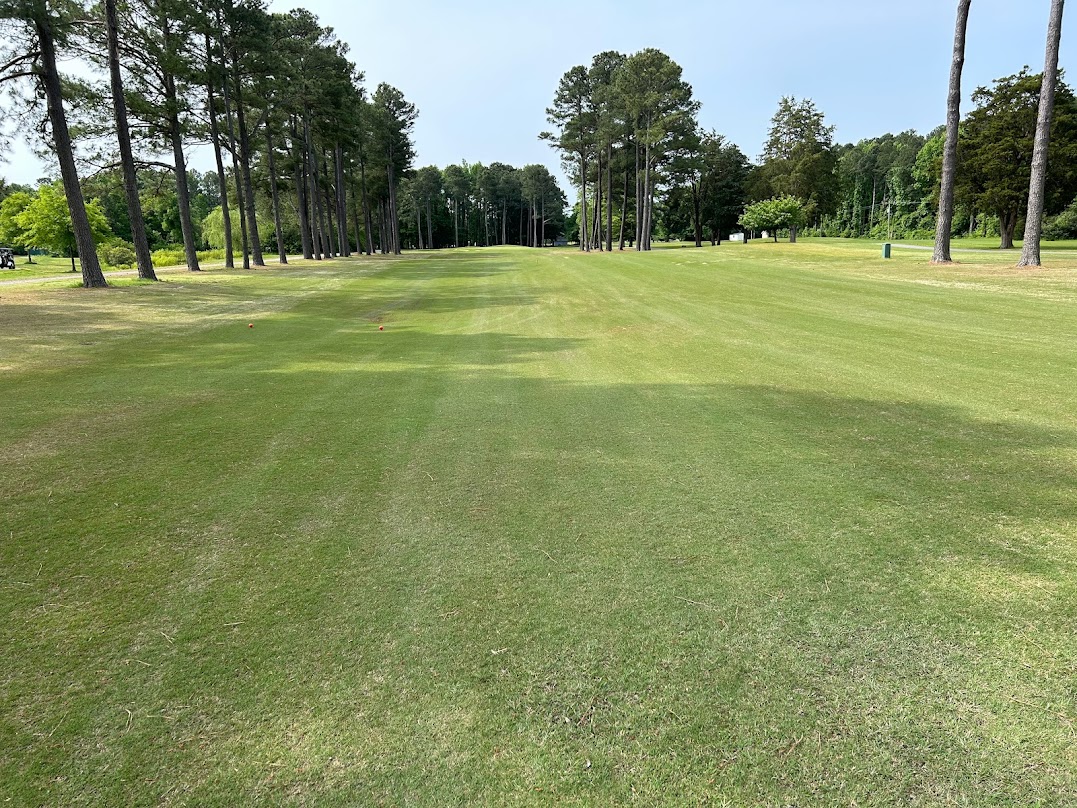From the Department of Plant Sciences at The Institute of Agriculture
The University of Tennessee
In total, 67% of superintendents indicated that their bermudagrass fairways are emerging from winter dormancy at a slower rate than in years past. These numbers were striking and highlight that slow bermudagrass green-up on fairways in 2023 is a statewide phenomenon that isn’t confined to a singular property.
While it’s not possible to determine a single cause for this phenomenon, several factors have likely played a role in what superintendents are seeing on Tennessee golf courses.
Drought Conditions in Fall 2022
Bermudagrass fairways across the state were subjected to drought conditions as they transitioned into dormancy in fall/winter 2022.
For example, Nashville only received measurable rainfall on a single day (Sept 24th) during the time-period of September 12 – October 12th. Moisture lost by bermudagrass plants via evapotranspiration during this time-period was over 10x greater than rainfall accumulation. Similar trends were apparent in Memphis, Knoxville, and Chattanooga as well.
Historic Freezing Event in December 2022
The state experienced somewhat of a historic freezing event in late December where average temperatures dropped more than 40°F in less than 12 hours in multiple cities across the state.For example, temperature in Nashville fell from 51°F the evening of December 22nd to -1°F on the morning of December 23rd. The National Weather Service reported that this was the city’s first sub-zero temperature reading in 27 years.Temperatures remained below freezing for several days thereafter and high winds during this time-period didn’t improve the situation. The peak wind gust reported by the National Weather Service in Nashville on December 22nd was 46 mph. The two principal causes of bermudagrass injury are low temperature exposure and water loss (i.e., desiccation) from leaf tissue.
Traffic on Dormant Fairways
Many superintendents indicated that fairways were subjected to cart traffic before and after these stressful weather events. Interestingly, 27% of courses reported that golf carts were allowed on dormant fairways for >130 days (i.e., fewer than 20 days were cart path only) from November 1, 2022 – April 1, 2023.
While golf was not being played every day during this window, this response equates to carts being allowed on dormant bermudagrass more than 86% of the time. Plant injury from cart traffic can hamper green-up in spring.
Temperature Fluctuations in Spring 2023
Much of the state experienced abnormally warm temperatures during January and February 2023. For example, on February 23rd, high temperature in Memphis, Nashville, Chattanooga, and Knoxville ranged from 74 to 83°F. The previous year, high temperatures ranged from 41 to 66°F on this date. However, this early warmth was followed by a multiple-week period (March 6 – 22nd) where temperatures averaged ≤ 60°F and lows fell below freezing on several dates.
Our hope is that the state sees warmer temperatures in May that will accelerate green-up up bermudagrass fairways. It’s important for superintendents to communicate to their golfers that the minimum temperature for bermudagrass growth is 55°F with optimal growth not achieved until air temperatures exceed 85°F.
Read the letter here: UTIA April 2023 Spring Green Up Letter
What we recommend:
It has been a cool spring this year across most of the Mid Atlantic area with Bermudagrass slow to come out. Pictures are from a private course in Virginia modeling nitrogen and metabolite apps on bermudagrass fairways (no bulk spreads). Even the shaded areas are coming on strong.
Monthly Modeling Recommended:
Floratine Products
Helena Product
11lbs./Acre Urea + N Fixx®


Call or email your Turf Representative today to learn more about this impressive green up modeling!
